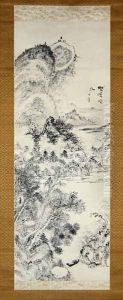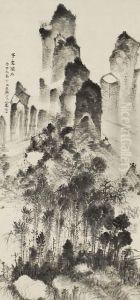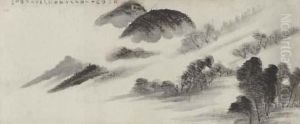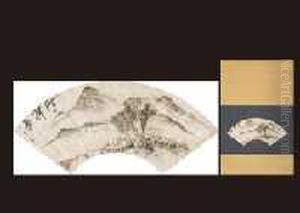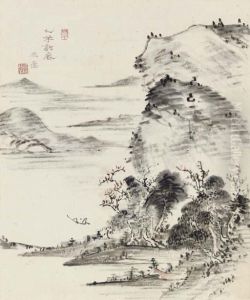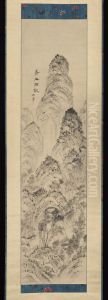Uragami Gyokudo Paintings
Uragami Gyokudo was a distinguished Japanese artist known for his profound contributions to the world of Nanga (Southern School) painting, a movement that sought inspiration from Chinese literati painting. Born in Bitchū Province (present-day Okayama Prefecture), Gyokudo embarked on his artistic journey deeply influenced by the cultural and artistic traditions of China, which were fervently admired by many Japanese literati and artists of his time. His work is renowned for its dynamic expression of natural landscapes, capturing the spirit and essence of the scenes he depicted with a unique fluidity and vibrancy.
Gyokudo's early years were marked by a rigorous study of Confucian classics and Chinese literature, which profoundly shaped his aesthetic and philosophical outlook. This foundation allowed him to infuse his paintings with a depth of cultural and intellectual meaning, setting his work apart from his contemporaries. In 1780, he made a significant move to Kyoto, where he further honed his skills and was exposed to a wider array of artistic influences.
Throughout his career, Gyokudo was known for his innovative approach to the Nanga style. He often ventured into the Japanese countryside, drawing inspiration from the natural beauty he encountered. His landscapes are characterized by their dynamic brushwork and the use of ink washes to create depth and texture, capturing the transient beauty of nature. Gyokudo's paintings are not merely representations of the physical landscape but are imbued with a sense of the spiritual and the sublime, reflecting the artist's own philosophical meditations on nature and existence.
In addition to his paintings, Gyokudo was also an accomplished musician and poet, talents that complemented his visual artistry and contributed to the holistic aesthetic experience he aimed to create. His work is celebrated for its embodiment of the literati ideal, where art, poetry, and music converge to express the profound connections between man, nature, and the cosmos.
Gyokudo's legacy is preserved in numerous collections both in Japan and internationally, where his works continue to be admired for their technical mastery and deeply philosophical nature. His influence extends beyond the realm of Nanga painting, impacting the development of later Japanese art movements and contributing to the global appreciation of Japanese aesthetics and thought.
